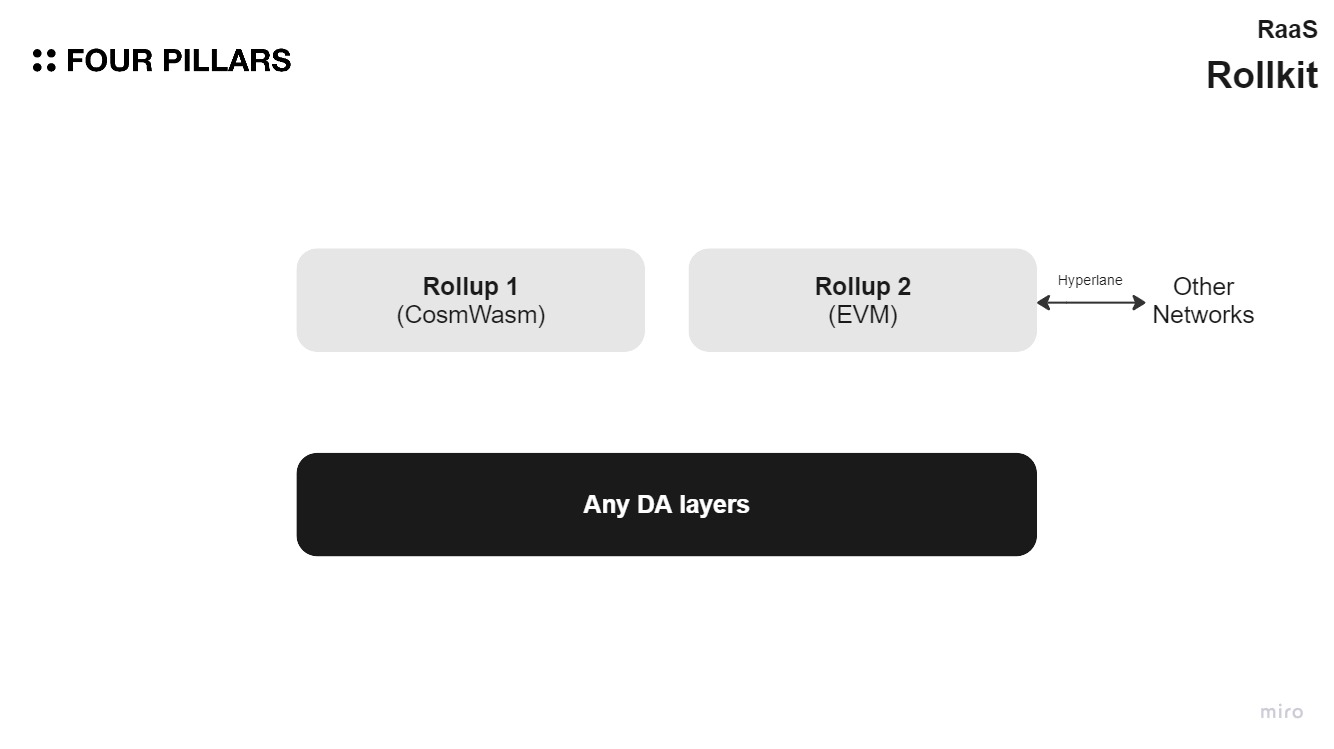Rollkit
Key Takeaways
- Rollkit is an open-source rollup framework specialized in building sovereign rollups.
- By default, centralized sequencer and pessimistic rollup mode are supported, but various sequencing modes (e.g., decentralized, shared decentralized, fork-choice rule) and rollup types (e.g., optimistic, ZK) will be implemented in the near future.
1. Overview

Rollkit is an open-source rollup framework that provides developers with the flexibility to implement rollups across the modular stack. Developers can easily launch sovereign rollups through Rollkit.
2. Execution
Developers can choose pre-existing ABCI-compatible state machines such as Cosmwasm or custom execution environments such as EVM. In terms of transaction sequencing, only centralized sequencer mode is supported, but also decentralized sequencer, shared decentralized sequencer, and pure fork-choice rule modes are planned to be implemented.
Transaction flow on rollups based on Rollkit is as follows:
- Users submit a transaction to Rollkit light node.
- The light node gossips the user’s transaction to a full node.
- Rollkit sequencer node orders valid transactions into a single block and then submit it to a DA layer.
- Rollkit full node can retrieve the transactions from DA layer and check the block validity that the Rollkit sequencer node submitted.
- If the block is invalid, Rollkit full node can generate fraud proofs and gossip them in the P2P network among other full and light nodes.
3. Settlement
Currently, Rollkit only supports sovereign rollup deployment, so rollup networks verify transactions through p2p communication between nodes. It supports three verification methods:
- Pessimistic rollup: This rollup only supports full nodes, and all full nodes run all transactions to check their validity.
- Optimistic rollup (Work in Progress): The single sequencer node of the rollup submits the block to the DA layer and passes the block header to the full nodes. Then, the full nodes verify the block header by running the block stored in the DA layer and pass it to the light nodes. If the sequencer node behaves maliciously, the full nodes can detect it and generate a fraud proof for the light nodes.
- Validity rollup (Planned): This involves nodes exchanging ZKP for verification. It is still in the planning stage.
4. Data Availability
DA can be accessed using generic interfaces so that rollup networks based on Rollkit can seamlessly integrate with any DA layer. The BlockRetriever interface facilitates the synchronization of full nodes with the data availability layer.
5. Interoperability
For EVM compatible sovereign rollups using Celestia as the DA layer, Hyperlane can be utilized as the interoperability solution.
6. Business Model
Rollkit does not have an additional business model. It’s public goods similar to Cosmos SDK.
7. Use Cases
7.1 Sovereign rollups on Bitcoin
Developers can create a sovereign rollup using the Bitcoin network as the DA layer with Rollkit. Bitcoin network can store transactions of sovereign rollup by using the same method as Ordinals, storing arbitrary data by utilizing Taproot transactions . In fact, the Rollkit team has even demonstrated an EVM sovereign rollup on a local Bitcoin test network using Rollkit in this demo.
